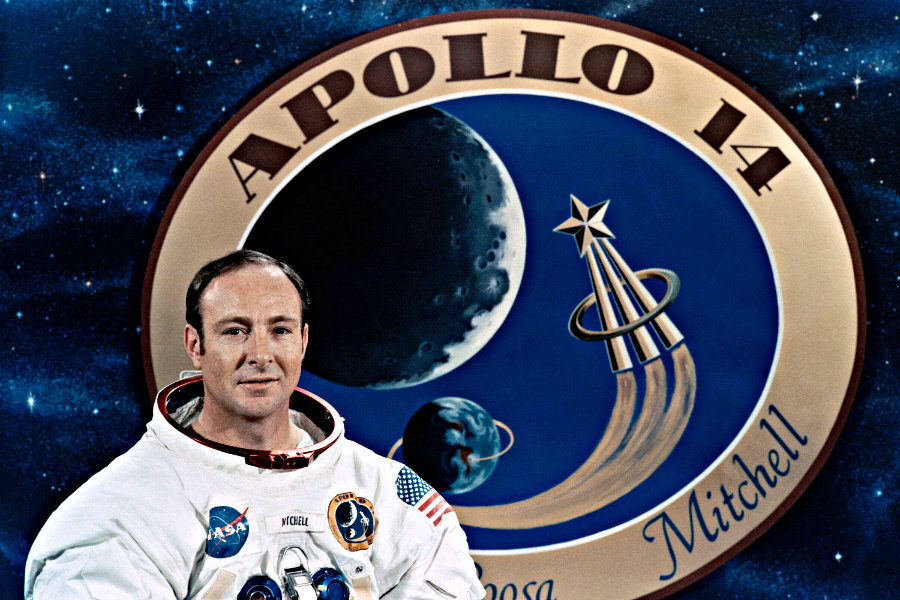Astronaut Edgar Mitchell: A legacy of research and moon walking
Loading...
NASA announced Friday that astronaut Edgar Mitchell passed away on Thursday, just one day before the 45th anniversary of his moon landing.
Dr. Mitchell was the lunar module pilot on Apollo 14, which launched in Jan. 31, 1971. He traveled to space alongside Alan Shephard and Stuart A. Roosa.
"As a member of the Apollo 14 crew, Edgar is one of only 12 men to walk on the moon," said NASA administrator Charles Bolden in a statement, "and he helped to change how we view our place in the universe."
In a 1997 interview for NASA's oral history program, Mitchell said he was committed to becoming an astronaut as soon as he heard about Sputnick.
"I set my cap toward amassing qualifications that I thought would be attractive to NASA in 1957. It took nine years, but I got a doctorate, got additional flight experience, additional jet hours, was assigned to the Manned Orbiting Laboratory Program for a while, so, getting space management experience. All of that went on for nine years till I was selected in 1966....
“I've been devoted to that, to exploration, education, and discovery since my earliest years, and that's what kept me going."
Born in Texas during the Great Depression, he became an astronaut in 1966, after receiving an Sc.D. in Aeronautics and Astronautics from MIT in 1964.
Prior to his own trip to space, Mitchell worked on several Apollo projects. He was a member of the team that worked to bring Apollo 13 home after an oxygen tank explosion damaged the space craft.
During Mitchell’s first and only mission in 1971, he and Shephard collected almost 100 pounds of moon rocks over the course of two moonwalks. In all, they spent more than 9 hours on the lunar surface.
The men also took time out from their mission to hit golfballs (Shephard) and take color photographs (Mitchell), including the iconic image of Shephard standing next to an American flag.
As a researcher, Mitchell was fascinated by the idea of consciousness. During the Apollo 14 mission, Mitchell conducted his own experiments on extrasensory perception, also known as thought transference.
While the other astronauts, Shephard and Command Module pilot Stuart Roosa, were sleeping, Mitchell experimented with mind reading. He concentrated on prearranged symbols while four contacts at home attempted to guess what he was thinking about. Approximately a quarter of the guesses were correct.
The experiments changed his life. In an interview with People magazine three years later, Mitchell said, “It was euphoric, one of those rare moments in life when you seemed to be able to reach out and touch the universe, when you had an intuitive flash about the real meaning of truth.”
Mitchell left NASA just a year after his lunar mission, and in 1973 he founded the Institute of Noetic Sciences to further pursue his interest in the study of consciousness. At the Institute, he studied such diverse fields as astrology, telekinesis, and fire walking.
In an attempt to raise awareness for his cause, Mitchell published a book called “Psychic Awareness: A Challenge for Science” in 1974. He also believed that the government was covering proof that aliens had visited Earth.
Although NASA maintained its appreciation for Mitchell’s work, a NASA spokesman commented that “we do not share his opinions on this issue.”
Mitchell later published two more books, both about his experiences. The first, published in 1996, was called “The Way of the Explorer.” The second, written in 2014, is titled “Earthrise: My Adventures as an Apollo 14 Astronaut.”
In his first book, Mitchell wrote, "There was a sense that our presence as space travelers, and the existence of the universe itself, was not accidental but that there was an intelligent process at work.”
Although other Apollo missions had successfully put men on the moon, Apollo 14 was the first mission specifically dedicated to research. The previous missions were focused on getting men to the surface of the moon, although Apollo 11 astronauts did collect some rock samples to bring back to Earth.
The second man on the moon, Buzz Aldrin, said a public goodbye to Mitchell over Twitter:







